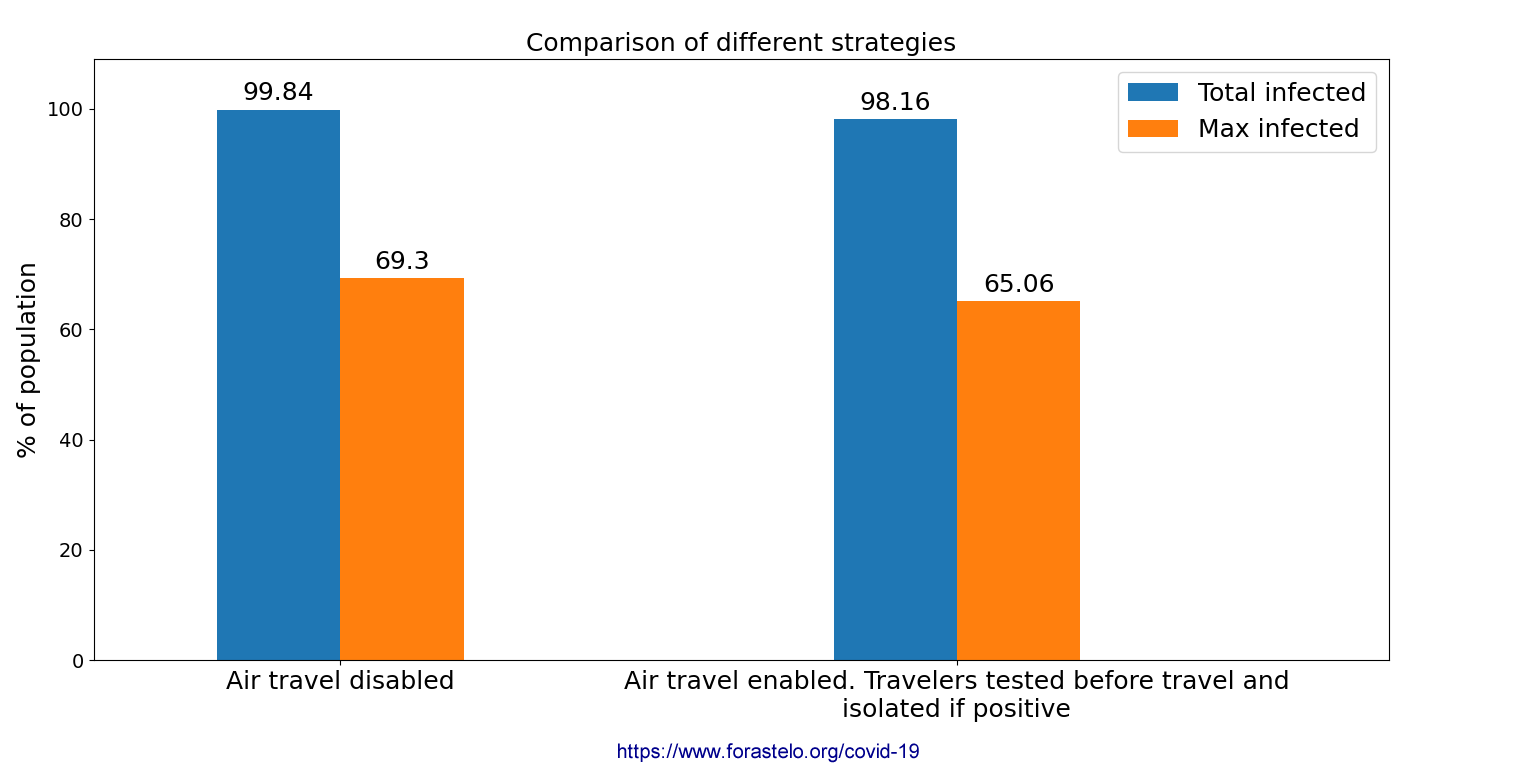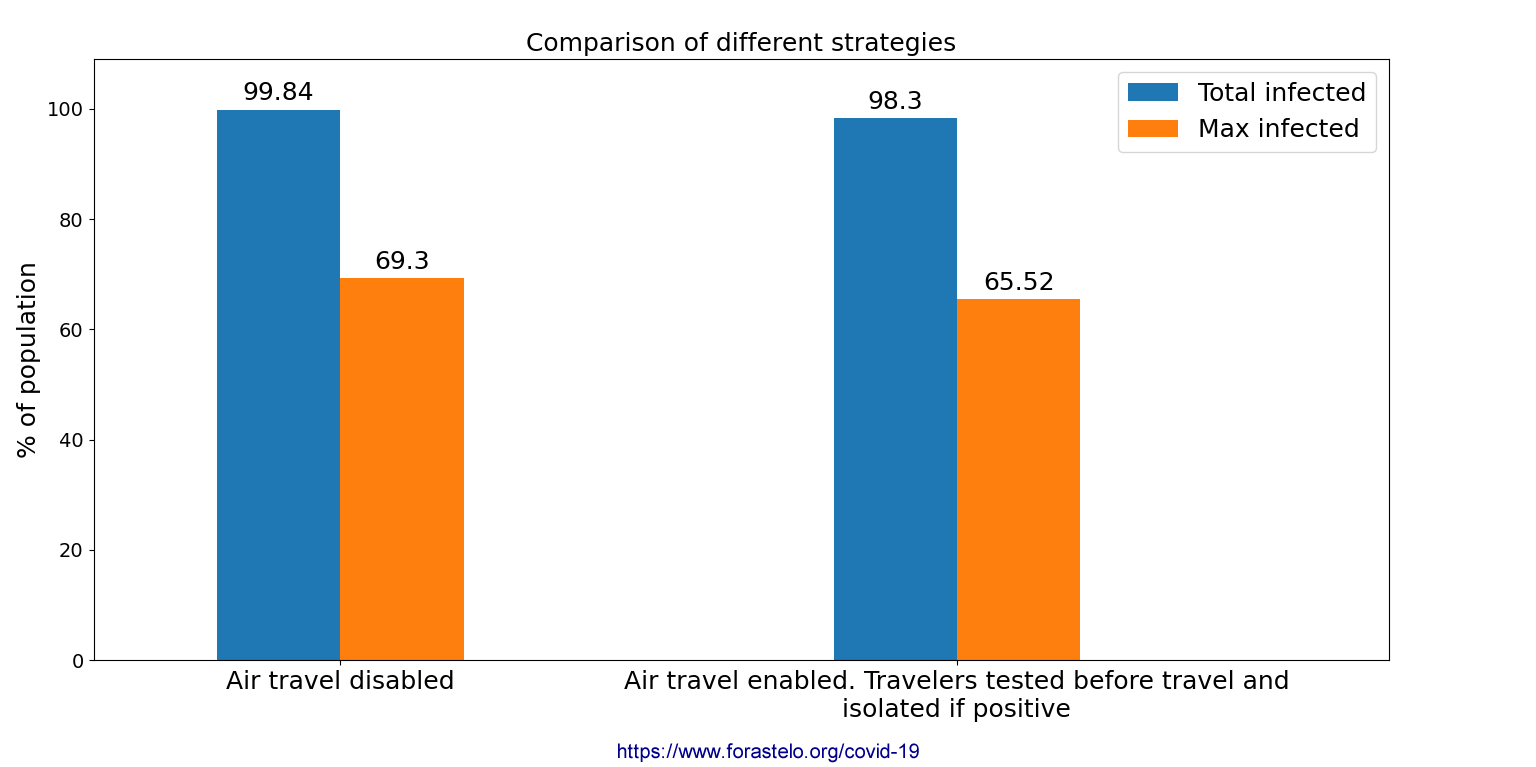NOTE: There is a newer article that uses a more realistic simulation model. You can read it here.
Freedom of travel is one of the many freedoms lost or restricted due to covid-19 measures. Air travel is especially hit hard during the pandemic. In order to prevent travelers from bringing new infections, almost all countries banned the entry of foreign tourists and even restricted domestic travel. Now, some countries prepare to lift the travel bans but plan to impose certain measures to lower the risk of new infections. Travelers will have to wear masks, practice physical distancing and may have to self-isolate for 14-days upon arrival.
Given the advances in technology, is this really the best governments can do in year 2020? How can travel bans be avoided during a pandemic? How can travelers travel without masks and avoid being quarantined for 14 days upon arrival? Some computer simulations suggest that air travel – and in fact all sorts of travel – can resume almost as usual if testing is available.
Figure 1 shows the result of a computer experiment in which two different simulations are run 200 times. In both simulations, the society is struck by a covid-19 epidemic and 3% of the population is infected. On the left, air travel is disabled; on the right, it resumes, but travelers are tested before they travel and isolated for 14 days if they are tested positive. The accuracy of the diagnostic test is set to 98% with a false positive probability of 1%. Daily number of travelers is taken to be 1% of the population.

In the end, there was a 4.24% decrease in the average maximum infected population and 1.68% decrease in the average total infected population (permutation tests with p < 0.01 for both). This means that testing travelers before travel and isolating positively tested travelers does not make anything worse. On the contrary, it decreases the maximum burden on the healthcare system and leads to a slight decrease in the number of total infected people. And most importantly, it allows negatively tested travelers to enjoy their freedom of travel without any negative side effects. Air travel can resume with full capacity and as usual, without passengers having to wear masks. Testing travelers can act like a daily screening of a small percentage of the population.
Some may think that this method cannot work because the accuracy of available tests are worse than 98%. However, another experiment says otherwise. Figure 2 shows another experiment in which the diagnostic test used has an accuracy of 80%. The test is applied twice and if one of the tests is positive, the traveler is treated as positive. This method is equivalent to using a single test with 96% accuracy, and the results are similar to the experiment above. The accuracy can even be improved to 99.2% by using a triple test. The only disadvantages are that the number of necessary tests and number of false positives are larger.

Of course, testing travelers before travel requires some modifications to traveling, but many travelers might prefer getting tested rather than undergoing a supervised 14-day quarantine after travel. Naturally, not only the travelers but everyone who interact with travelers during the travel should be tested. Ideally, such a solution would be implemented at a global level in the world. It can also be implemented with cooperation among a group of nations or at a national level. At least, some people who put a high value on their freedom of travel can come together and implement such a solution as long as governments or any other groups do not prevent them.
The simulations above are based on a toy model and are not very realistic, but the results of similar computer experiments with more realistic models would probably be the same. I will present other experiments suggesting that smart, wide-scale testing can reduce the number of days lost to unnecessary quarantine of otherwise healthy people and prevent an avoidable decrease in economic activity.
About the simulation
The computer experiments are performed with Covid-19 Simulation version 0.1. Visit github.com/firatio/covid19_simulation to read about the assumptions and rules used in the simulations. You can also view and download the source code. You can contribute to the project with your coding skills and/or ideas for new strategies to prevent the covid-19 outbreak from restricting our freedoms.
